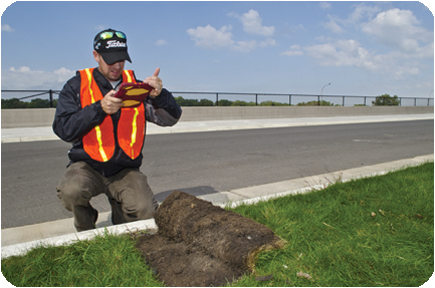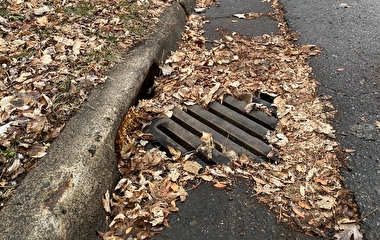For Minnesota’s roadside grasses, life isn’t easy. To survive, grass must be able to withstand extreme stresses including drought, heat, disease, soil compaction, poor quality soils, and high levels of road salt. Ideally, it could survive all that while still looking lush and green.
“Many roadsides, especially in metropolitan areas, need to look good,” says Eric Watkins, associate professor in the Department of Horticultural Science. “In addition to aesthetics, quality roadside vegetation is needed to prevent erosion and maintain water quality from roadside runoff.”
In 2010, the Minnesota Department of Transportation (MnDOT) noticed a number of its new sod and seed plantings were failing and asked U of M experts to take a look at its specification. “We saw the problem immediately,” Watkins says. “The specification was for a mix with a lot of Kentucky bluegrass, which needs a great deal of care and watering. There was clearly an opportunity for improvement.”
mixtures.
During the next several years, Watkins’ team, led by former graduate student Josh Friell, worked to identify the best seed and sod for use along Minnesota’s roadsides in research sponsored by the Minnesota Local Road Research Board and MnDOT. Findings are now available in a final report.
The study was completed in several stages. First, many different types of cool-season grasses were planted in the fall and assessed the following spring to determine their ability to establish and survive on roadsides in Minnesota. Next, researchers looked at the salt tolerance of those grasses.
“In cold-weather climates like Minnesota’s, salt tolerance is required because of the application of deicing salts in the winter,” Watkins explains. “To determine if a grass species could stand up to this stress, we applied different levels of salt solution to the different grass species in a greenhouse. We identified several types of fescue grass as the most salt tolerant.”
Based on the results of the first two stages, researchers developed and tested 50 different grass mixtures along Minnesota’s roadsides and evaluated the survival and performance of those plantings for two years. In addition, each mixture was planted under a movable rain-out shelter to determine drought tolerance. This phase of the study resulted in the identification of a mix of three types of fescue for planting on roadsides in Minnesota.
Finally, researchers needed to find out if the new grass mixture would work as sod (sod growers need to be able to harvest it properly from their sod fields). “Most sod currently grown in Minnesota is Kentucky bluegrass, which isn’t the best for winter survival when salt stress is a problem,” says Watkins. “We grew 51 different grass mixtures as sod for 22 months and found that contrary to popular belief, fine fescue mixtures produced sod of acceptable strength for harvest.”
MnDOT has applied the research to standard specifications for construction activities for salt-tolerant sod products, salt/shade/drought-tolerant turf seed mixtures, and a third-party certification program for ensuring performance standards are met based on past and current research results, says Dwayne Stenlund, MnDOT erosion control engineering specialist. Researchers are also working with the state’s sod growers to produce sod grown from the new seed blends.
Moving forward, the researchers plan to continue their work to improve Minnesota’s roadside grass plantings. “The reality is that the success of sod or seed plantings depends on a number of factors, including time of year, amount of water, soil preparation, temperature, and sod harvest depth,” Watkins says. “In our next project, beginning this spring, we will identify the most important factors for the success of roadside plantings and sod cultivation, and then help MnDOT update the specifications for managing new installations.”




